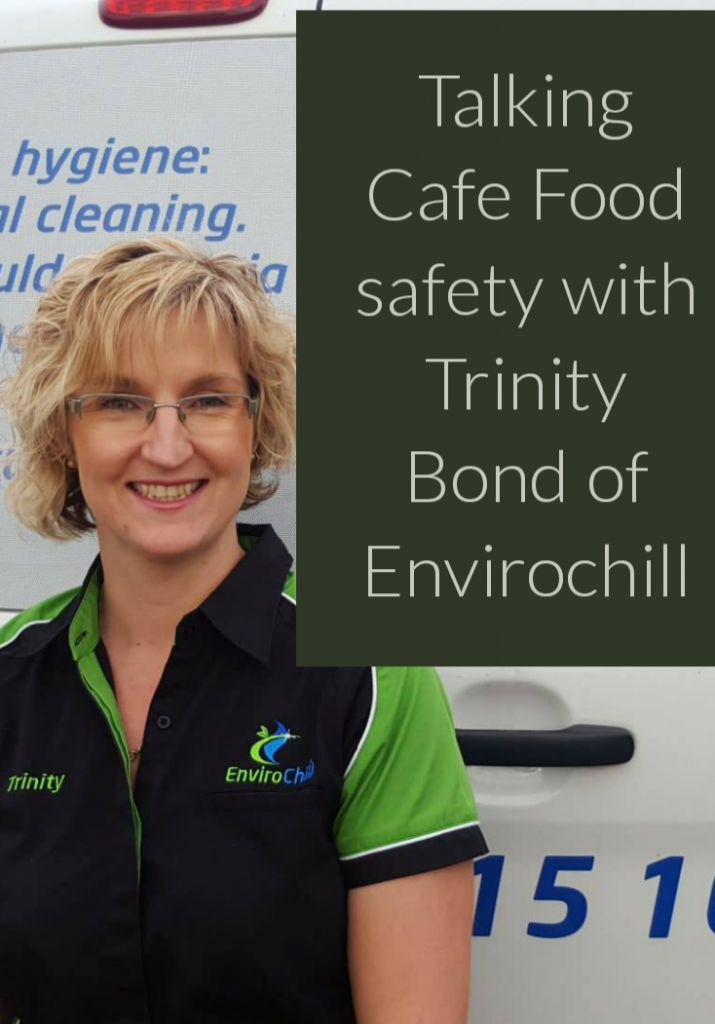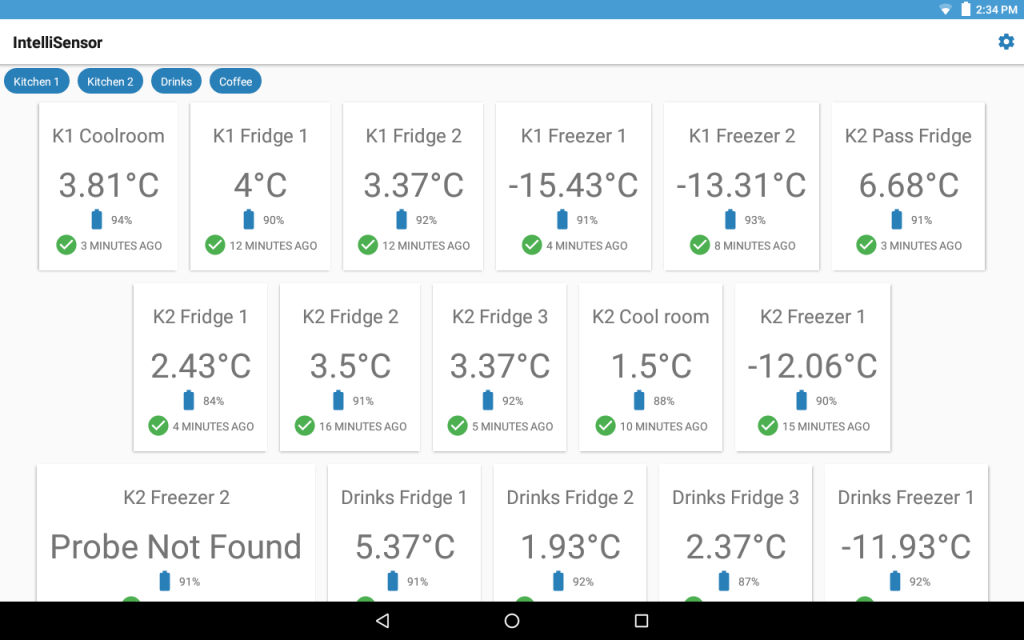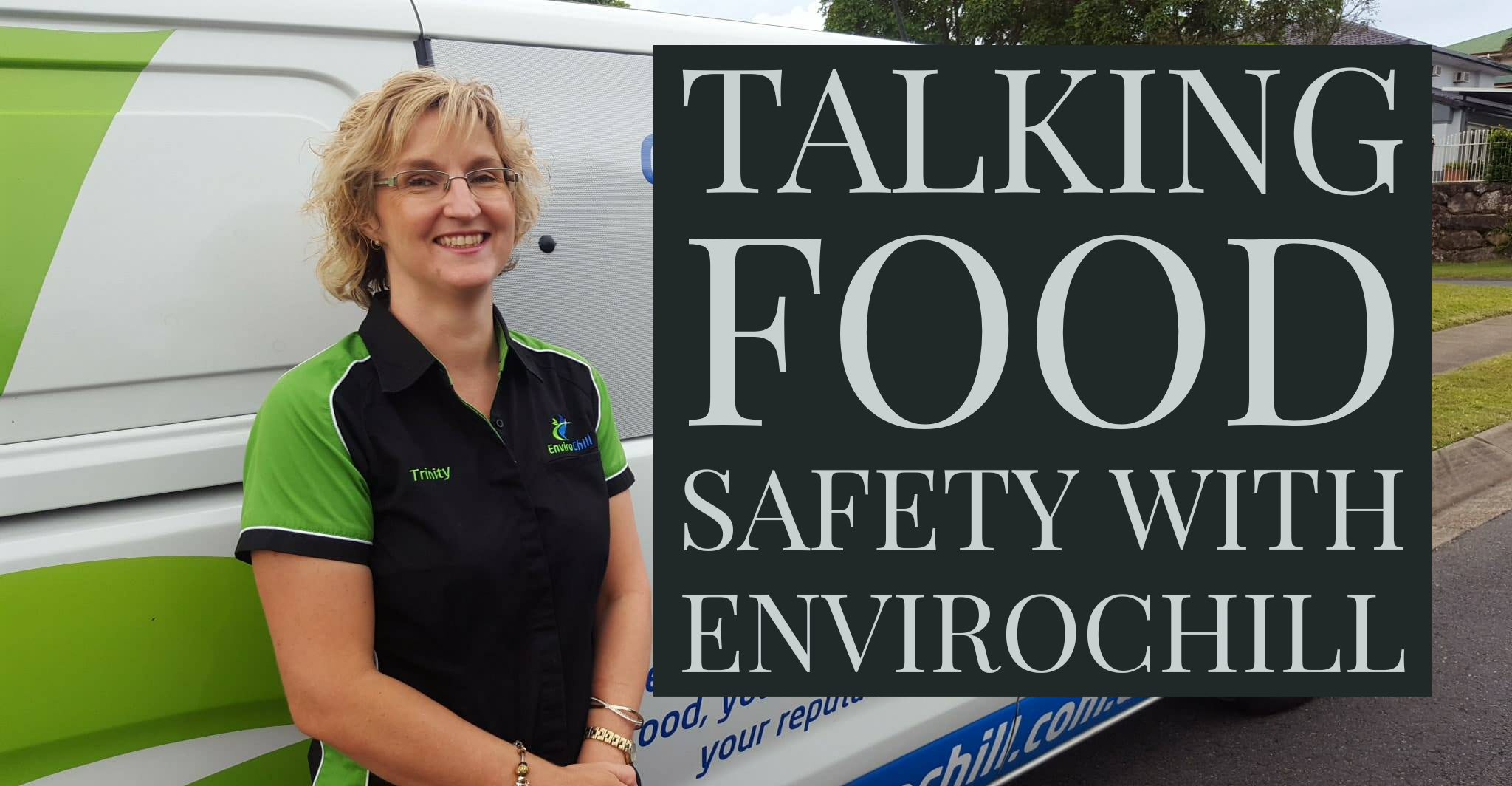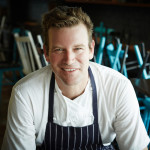Keeping it Cool: Talking Fridges and Food Safety with Trinity Bond of EnviroChill
While food safety might not be glamorous, it’s one of the most important aspects of the hospitality industry. Food is the literal bread and butter for cafes and restaurants, after all. Yet many cafe and restaurant owners don’t look into how they can maximise food safety and minimise food waste. We spoke with Trinity Bond, the director of EnviroChill, about this often-overlooked but critical topic for the hospitality industry.
EnviroChill is a company known for its temperature-monitoring products for cold rooms, fridges and freezers. These products aim to improve the efficiency and lifetime performance of this equipment, reducing problems with both food safety and food waste. Running the business for 14 years, Trinity has clearly found success in addressing these problems. But she has a lot of advice for cafe owners that go beyond refrigeration.
Know the Guidelines
 The first step for food safety is to know, first of all, what the guidelines are in the first place. Checking the Australian Food Safety Standards is a good start, especially section 3.2.2, which covers things such as safe food handling and storage. But there are a lot of rules to follow – 100 pages’ worth, in fact – and it takes a lot of time and effort to ensure you’re compliant with them all.
The first step for food safety is to know, first of all, what the guidelines are in the first place. Checking the Australian Food Safety Standards is a good start, especially section 3.2.2, which covers things such as safe food handling and storage. But there are a lot of rules to follow – 100 pages’ worth, in fact – and it takes a lot of time and effort to ensure you’re compliant with them all.
Luckily, some local city councils are happy to help. Brisbane, for example, has a program called Eat Safe to help business owners know the basic rules that will help them pass any inspection. And because these are based on the same national standards, you can take this knowledge and easily open stores in other cities or states. While local procedures and enforcement may vary, the standards themselves stay the same.
Keep Equipment in Top Shape
Monitoring and maintaining equipment is another obvious but overlooked aspect of the food business, and one that owners and staff members alike may skim over from time to time. However, without regular cleaning and maintenance checkups, equipment can break down and potentially impact food safety. This is especially important in the case of freezers and fridges, Trinity asserts.
Sometimes, plastic bags can get caught up in the fan units of cold rooms, and without regular maintenance, this issue can go unnoticed for months, even well after a problem has come up and lots of food has already been thrown away. Trinity herself has seen such cases. It’s always best to check such things as air vents and fan units regularly, to ensure that things are working properly and food continues to be stored at acceptable temperatures.
 This is where regular monitoring can step in. EnviroChill’s products make the process fully automated, making your own job easier, but trusted staff can also do the work of checking the air and food temperature of cold storage units and recording the results. Documentation establishes patterns and expectations, as well as a digital or paper trail in case of an inspection. It’s also much easier to detect when something goes wrong, and you can then take the steps to fix it.
This is where regular monitoring can step in. EnviroChill’s products make the process fully automated, making your own job easier, but trusted staff can also do the work of checking the air and food temperature of cold storage units and recording the results. Documentation establishes patterns and expectations, as well as a digital or paper trail in case of an inspection. It’s also much easier to detect when something goes wrong, and you can then take the steps to fix it.
Reducing Food Waste
In Trinity’s experience, few businesses measure and manage their food waste – even when food is the most important part of the business. “If it can’t be measured,” she says, “it can’t be managed.” But keeping track of food waste doesn’t have to be complicated. One simple way is to record what customers are turning back uneaten in their orders. For instance, if leftover chips consistently turn up on customers’ otherwise empty plates, it may be time to rethink the portion size.
Reducing food waste may not seem such an obvious goal until you look at the statistics. A study done in 2016 through RMIT in Melbourne found that, on average, 40% of food purchases coming through the front door were coming out in the bin. And considering that it’s an average, some businesses may be throwing less food away, but others may be throwing away even more – up to 60% of their food purchases. That’s a lot of food – and money – that business owners are literally throwing away.
Trinity herself is passionate about reducing food waste, and does her best to minimise it in her own kitchen. While she composts, she also makes sure to use as much of the edible parts of the food as possible. She advises that cafes and restaurants do the same. In addition to saving food, you also have a chance to get creative with your menu. “Sit back and ask, how can I use this more efficiently?” she says. “How can yesterday’s overstock become today’s special?”
The food safety guidelines may be extensive, but as we learned with Trinity, there are steps you can take today to ensure that your food is safe and your waste minimal. You can look up EnviroChill on their website or on Facebook, or you can contact Trinity directly with your questions and comments.
Trinity’s Key Takeaways
- Keep your air vents and cold-room fan units clean, to keep them running efficiently and your food safe to eat.
- Whether manual or automated, keep track of your refrigerators’ internal temperatures to ensure they’re running smoothly and efficiently.
- Air temperature and internal food temperature are not the same; make sure to check the core temperature of food in addition to the surface temperature and air temperature.
- Don’t keep food trays with plastic wrap or baking paper on the top shelf by the fan unit – use a lower shelf.
- Keep track of your business’s food waste, and find ways to adjust portion sizes.
- Use as much of the food you buy as possible. Get creative with daily specials!
- Make sure to review food safety regulations and ensure compliance among all the staff
- Have the FOH and BOH staff switch roles for a bit so everyone is familiar with what everyone else does and can better work together as a team
Podcast: Play in new window | Download
Subscribe: RSS










